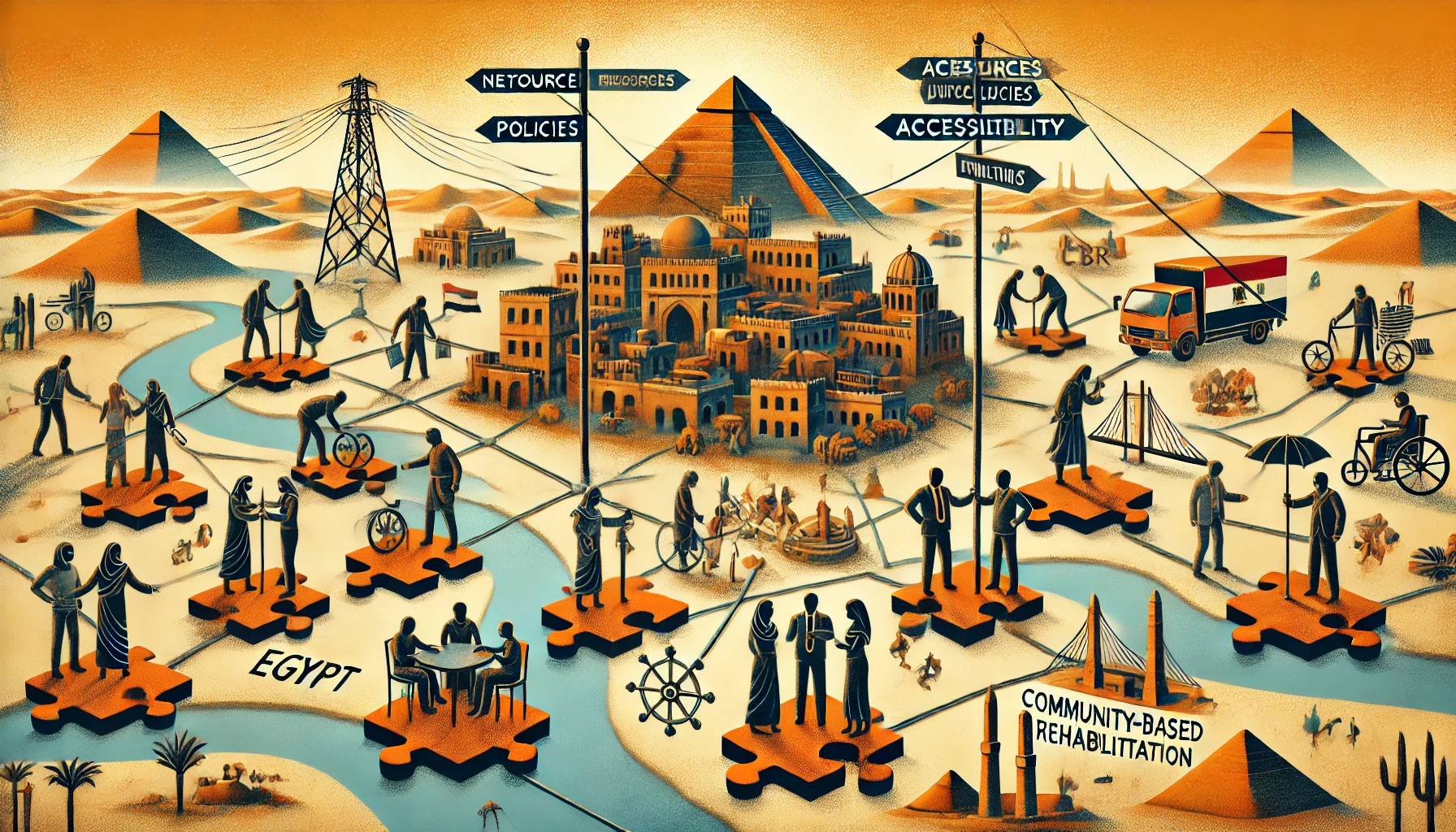Networking for Community-Based Inclusive Development (CBID) and Community-Based Rehabilitation (CBR) in Egypt faces several challenges:
- Limited Awareness and Understanding: Many organizations and stakeholders may lack a comprehensive understanding of CBID and CBR principles. This limits their engagement and willingness to collaborate effectively in such initiatives.
- Geographical Disparities: Egypt has diverse geographic areas with varying levels of access to resources. Networking between organizations in rural or Upper Egypt areas and those in more urbanized regions like Cairo or Alexandria can be complex due to these disparities.
- Fragmented Efforts: There is often a lack of coordination between government bodies, NGOs, and civil society organizations working on disability inclusion. This fragmentation can result in duplicated efforts, inefficient use of resources, and missed opportunities for collaboration.
- Inadequate Technological Infrastructure: While some urban areas may have access to reliable internet and communication tools, many rural regions in Egypt struggle with poor technological infrastructure. This can hamper communication and coordination between organizations and hinder effective networking.
- Cultural and Societal Barriers: Negative societal attitudes towards disability can act as a barrier to forming strong networks. Some organizations might not prioritize disability inclusion, viewing it as a secondary issue.
- Financial Constraints: Limited funding and resources for CBID and CBR programs can make it difficult to support large-scale networking initiatives. Organizations often lack the funds needed for conferences, training, or collaborative platforms to facilitate effective networking.
- Lack of Skilled Personnel: Not all regions have access to professionals skilled in CBID/CBR approaches. This gap in expertise can lead to unequal development and networking challenges between regions that have specialists and those that do not.
- Policy Gaps: Although Egypt has made progress in disability rights, gaps in policies and their implementation can create challenges for building a strong network of CBID and CBR practitioners. Without clear support from the government, networking efforts may lack the necessary formal structure.
- Language and Communication Barriers: Egypt is home to diverse linguistic and cultural groups, and effective networking often requires overcoming language barriers, particularly in areas where local dialects or languages are prominent.
Addressing these challenges would require a concerted effort from all stakeholders, including government support, better infrastructure, and increased public awareness of CBID and CBR.
Despite the challenges, there are several opportunities for advancing networking for Community-Based Inclusive Development (CBID) and Community-Based Rehabilitation (CBR) in Egypt:
- Growing Awareness of Disability Rights: With increasing awareness of the rights of persons with disabilities, more organizations and stakeholders are recognizing the importance of inclusion. This creates fertile ground for building strong networks that promote CBID and CBR practices.
- Supportive Legal Framework: Egypt has made strides in establishing laws that support the rights of people with disabilities, such as the Disability Law (Law No. 10 of 2018). This legal framework provides a foundation for advocating for inclusive policies and fostering collaboration among organizations working on disability issues.
- Expansion of Civil Society Organizations: Egypt has a robust network of NGOs and civil society organizations, many of which are focused on development and disability rights. These organizations can collaborate on CBID/CBR initiatives, share resources, and create synergies that lead to more effective implementation of programs.
- International Partnerships and Donor Support: International organizations, such as the UN and other donors, are increasingly supporting inclusive development projects in Egypt. These partnerships can provide funding, technical expertise, and networking opportunities to local organizations working on CBID and CBR.
- Technological Advancements: While some regions still face technological barriers, Egypt’s growing access to the internet and digital platforms presents an opportunity to improve communication and collaboration between organizations. Online platforms, social media, and virtual meetings can be used to create stronger networks, share best practices, and organize training.
- Educational and Training Programs: Egypt has a growing number of universities and institutions offering training in areas related to disability, rehabilitation, and inclusion. These programs can serve as hubs for developing skilled professionals who can contribute to networking and furthering CBID/CBR efforts across the country.
- Regional and Global Networks: Egypt is well-positioned to leverage regional and global networks on disability and inclusive development. Participation in international forums and conferences allows for knowledge exchange, exposure to successful models, and potential collaborations with organizations from other countries.
- Community-Based Models of Success: There are examples of successful community-based initiatives in Egypt that have made tangible impacts on the lives of people with disabilities. These models can be scaled and replicated, creating momentum for more organizations to join forces and strengthen the network of CBID/CBR practitioners.
- Youth Engagement: Egypt’s large youth population represents an opportunity for building a future generation of advocates for disability rights and inclusive development. Youth-focused programs, volunteerism, and social entrepreneurship can be key elements in fostering a strong network for CBID/CBR.
- Government Engagement in Development Programs: As Egypt increasingly focuses on development programs, particularly in the areas of health, education, and social services, there is an opportunity to integrate CBID/CBR into broader national development strategies. Government involvement can provide a formal structure for networking and long-term support for inclusion initiatives.

